Introduction
In today's rapidly evolving retail landscape, machine learning is transforming the way businesses operate, offering unprecedented opportunities for growth and customer engagement. From personalized recommendations that enhance the shopping experience to advanced dynamic pricing strategies that maximize profitability, machine learning algorithms are reshaping e-commerce. As global retail e-commerce sales are projected to soar to approximately $7.4 trillion by 2025, the integration of AI-driven solutions is becoming more critical than ever.
This article delves into the multifaceted applications of machine learning in e-commerce, exploring how it revolutionizes inventory management, customer support via chatbots, fraud detection, and supply chain optimization. Additionally, it discusses the impact of AI on enhancing in-store experiences, visual inspection, and sales forecasting, providing a comprehensive overview of how retailers can harness these technologies to stay competitive and meet consumer expectations.
Personalized Recommendations
Machine intelligence algorithms are transforming the e-commerce environment by carefully examining consumer behavior and preferences to provide highly tailored product suggestions. By utilizing information from previous purchases, browsing habits, and even social media engagements, retailers can create personalized shopping experiences that greatly increase sales and improve satisfaction.
In 2021 alone, retail e-commerce sales hit approximately $4.9 trillion worldwide, and this figure is expected to grow by 50% over the next four years, reaching about $7.4 trillion by 2025. This immense growth underscores the critical role of user experience (UX) in maintaining competitiveness. Machine learning serves as a key driver in this domain by sifting through vast amounts of data across multiple touchpoints—from clicking on advertisements to making purchases and leaving reviews.
Retailers can build sophisticated recommendation models by understanding inventory, buyer preferences, and shopping contexts. This is particularly challenging in verticals such as grocery and retail, where stores often carry hundreds of thousands of SKUs in thousands of categories. Efficiently filtering these choices to recommend relevant options is crucial. Furthermore, consumer purchasing behaviors differ significantly; some like to reorder the same items, whereas others look for new or seasonal offerings.
Improvements in artificial intelligence and algorithm training, particularly in fields such as Natural Language Processing (NLP), allow retailers to gain valuable insights from client feedback. This aids in prioritizing updates and features that enhance user satisfaction. Additionally, collaborative and content-based filtering techniques further enhance recommendation accuracy, ensuring that the shopping experience is both relevant and engaging.
The influence of AI extends beyond recommendations. It plays a significant role in optimizing pricing strategies, staffing levels, and even delivery options, ultimately improving the overall shopping experience. As a testament to its impact, 62% of decision-makers believe that AI will expand their e-commerce teams rather than reduce them, highlighting the growing importance of AI-driven solutions in the industry.
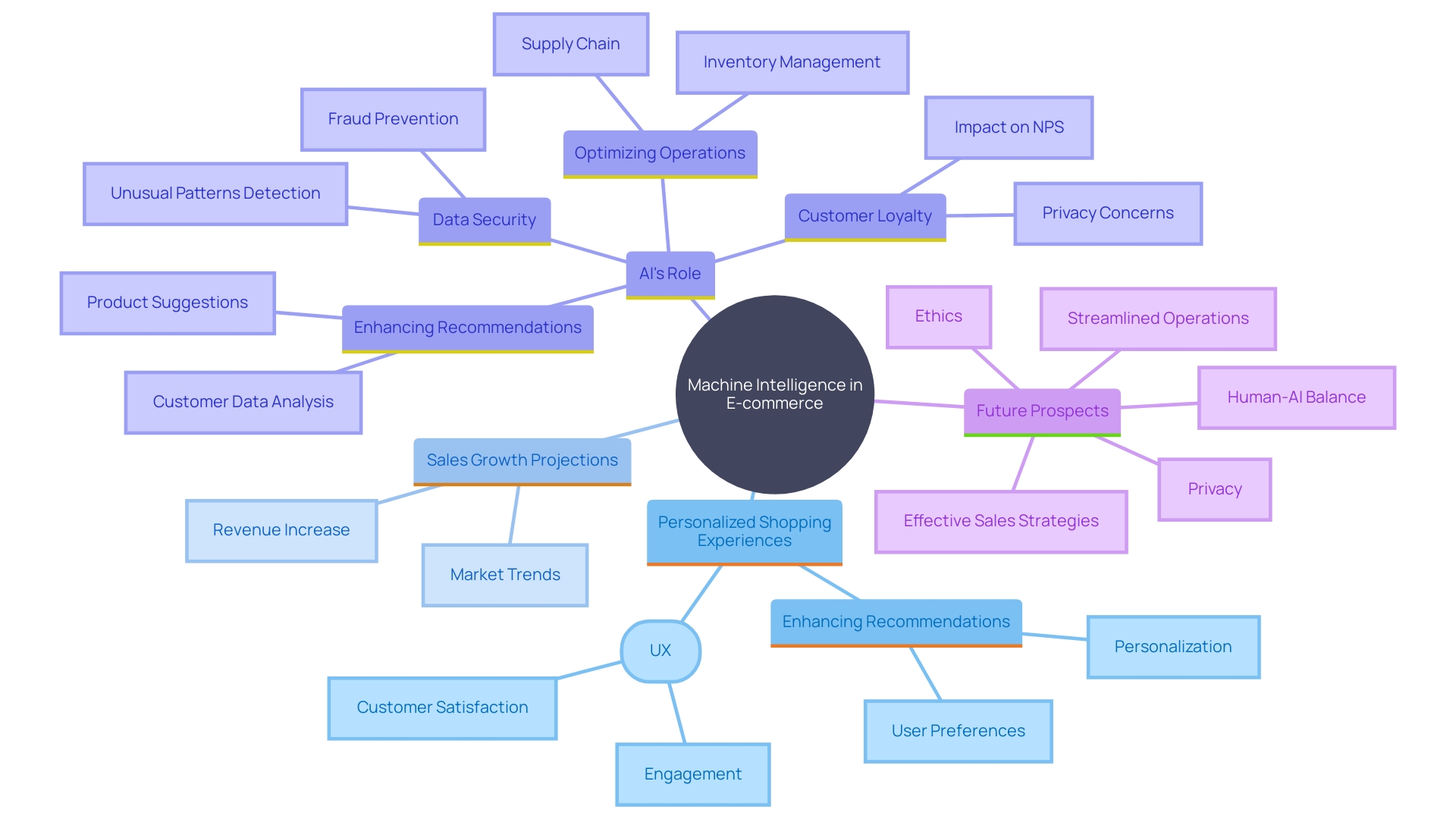
Chatbots and Virtual Assistants
Utilizing machine learning, chatbots, and virtual assistants can transform support services by offering round-the-clock assistance. AI-driven tools such as ChatGPT-powered chatbots not only handle inquiries and provide product information but also assist with order tracking and manage returns efficiently. This human-like interaction fosters a sense of engagement and can lead to a more enjoyable and personalized shopping experience. The implementation of AI in client support has proven transformative, with statistics showing that more than half of service organizations plan to use chatbots within a year and a half. Furthermore, chatbots can lower service expenses by up to 30% while providing reliable assistance at all times, including holidays and weekends. In one instance, a large tools manufacturing and retail business automated 90% of their service inquiries within six weeks of integrating an AI Service Engine, significantly enhancing their operational efficiency. As e-commerce continues to evolve, the integration of AI and natural language processing is becoming a game-changer, driving enhancements in service assistance, search, and recommendations.
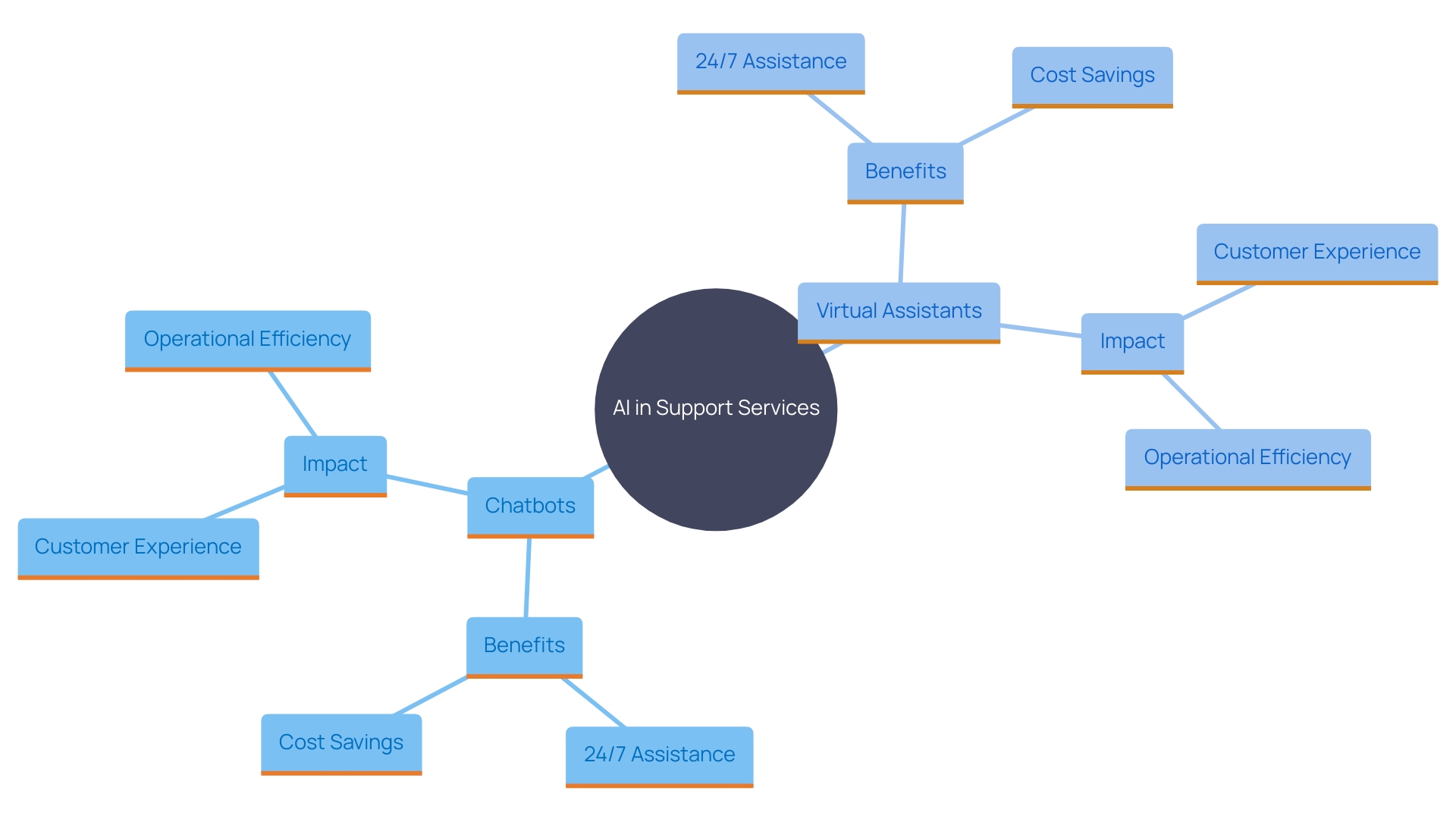
Dynamic Pricing
Dynamic pricing strategies empowered by machine learning models are revolutionizing the retail landscape. These advanced algorithms enable retailers to adjust prices in real-time based on several critical factors such as demand, competition, and buyer behavior. This agility ensures businesses remain competitive and maximize profits in a fast-paced market.
For example, Carrefour's adoption of artificial intelligence in their micro-stores allows for real-time price adjustments, enhancing customer convenience and operational efficiency. Similarly, Amazon's dynamic pricing model sees millions of price changes daily, ensuring optimal pricing strategies are always in place.
Machine learning models can also optimize initial, discounted, and promotional prices by considering various elements, including sales volume and consumer purchasing patterns. Examining extensive retail scanner datasets shows that minor price alterations occur more often when sales volumes are high. This insight is crucial for maintaining competitive pricing strategies and ensuring availability of goods.
Moreover, the use of artificial intelligence in online shopping, as shown by BigBasket utilizing Amazon SageMaker, emphasizes notable savings in expenses and time while enhancing precision in item identification. This use case highlights the wider possibilities of automated intelligence to enhance efficiency and profitability in retail operations.
Overall, the incorporation of automated algorithms in dynamic pricing not only aids in determining the best price for each product but also improves the overall shopping experience through personalization and timely modifications.
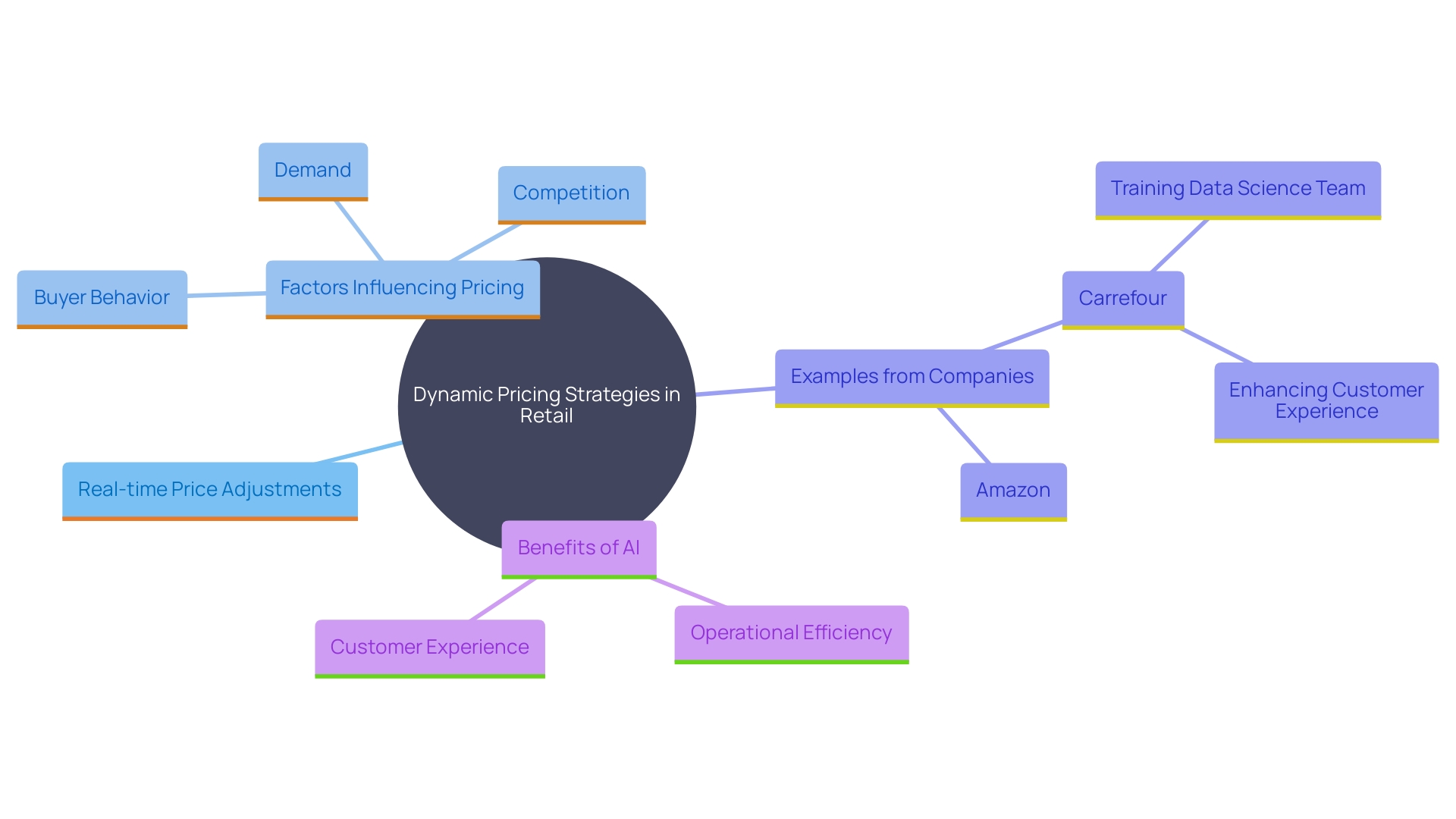
Inventory Management
Predictive analytics driven by artificial intelligence can significantly improve inventory management for online retailers. By leveraging sophisticated algorithms, retailers can forecast demand with greater precision, ensuring optimal stock levels and reducing excess inventory. This approach not only minimizes stockouts but also boosts operational efficiency. For instance, an artificial intelligence model used in demand forecasting allowed Auchan Retail International to decrease stockouts and overstock by 18% across their national operations within a year. Moreover, traditional rule-based inventory systems can be replaced with intelligent replenishment strategies, considering multiple variables to optimize the distribution network and even reduce CO2 emissions. The capability to execute time series models further enables retailers to optimize resource distribution and forecast future product demand precisely, whether for current items or new introductions. As online commerce keeps expanding, with worldwide sales anticipated to hit around $7.4 trillion by 2025, embracing automated analytics solutions becomes ever more crucial for remaining competitive and satisfying customer expectations.
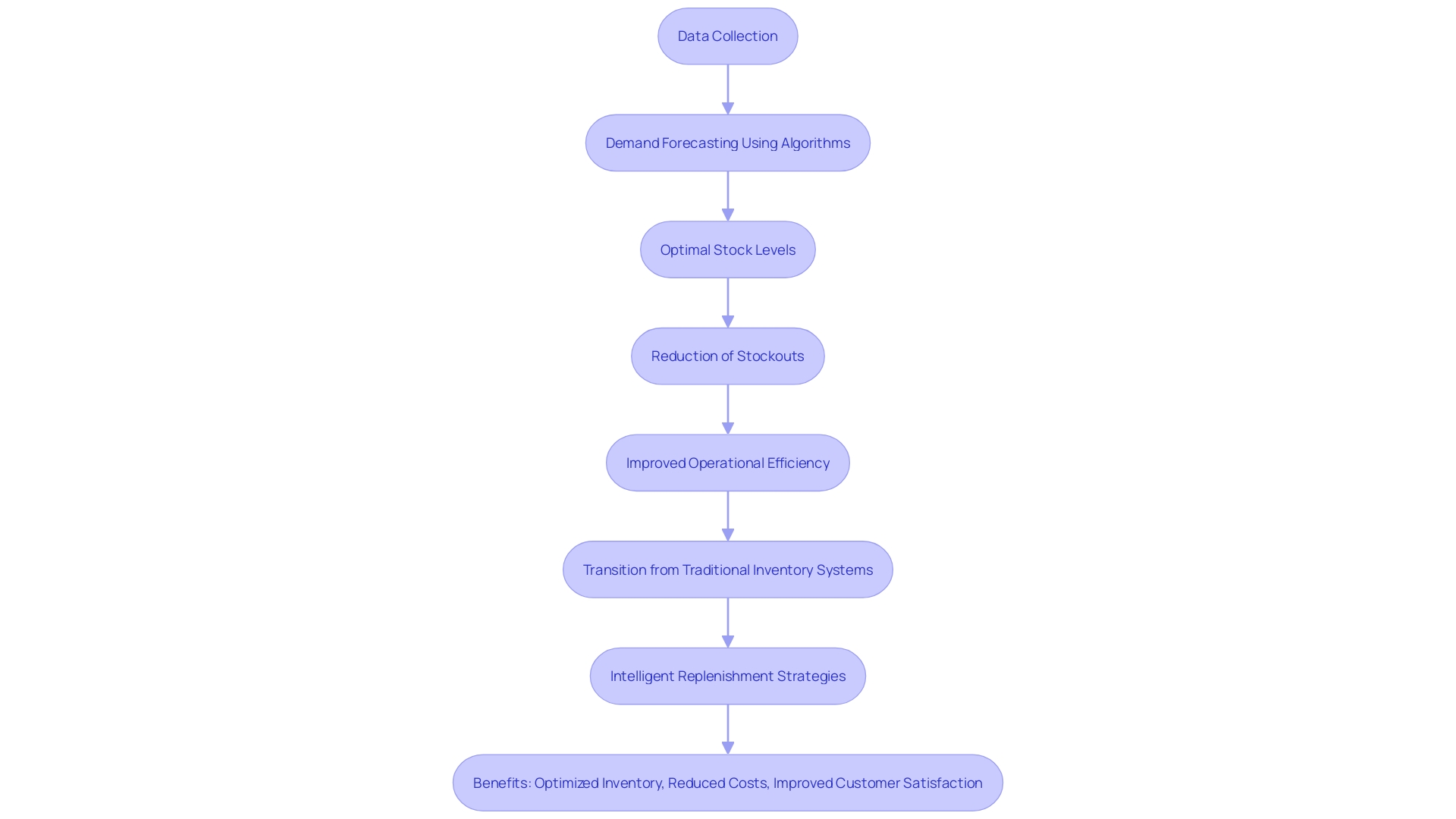
Customer Sentiment Analysis
Retailers can leverage machine learning to conduct sentiment analysis on client reviews and feedback across various platforms. This method is crucial for businesses to understand client opinions and make data-driven choices to improve products and services. Sentiment analysis APIs provide standardized classification, reducing personal bias and ensuring reliable results across different data sources. This consistency is vital for maintaining a clear and accurate understanding of client opinions. For instance, Luigi’s pizzeria, which faced an overwhelming amount of feedback from patrons, used sentiment analysis to determine if diners genuinely enjoyed the pineapple on their pizza or if it was just a vocal minority.
Moreover, sentiment analysis offers real-time insights, enabling businesses to address issues or capitalize on trends as they happen. This immediate feedback loop allows companies to adjust their strategies promptly, such as modifying a menu based on real-time client feedback before a busy weekend.
Investing in AI-driven tools for sentiment analysis is becoming increasingly popular among e-commerce decision-makers. A recent survey indicated that 86% of e-commerce leaders plan to increase their AI investments, with 76% reporting a revenue increase of 11% or more through AI utilization. This trend highlights the significance of AI in enhancing business performance, improving client experience, and increasing loyalty levels.
Retailers like Amazon have been at the forefront of utilizing AI and machine learning to optimize logistics, improve item selection, and elevate user experiences. By analyzing client feedback, these companies not only enhance their products and services but also promote positive consumer interactions and enduring relationships. This proactive approach helps in building trust and loyalty, which are crucial for sustained business growth.
Integrating sentiment analysis into review management enables businesses to respond quickly and compassionately to client feedback, enhancing overall satisfaction. Additionally, competitive analysis through sentiment comparison helps businesses understand their positioning and public perception relative to competitors. This comprehensive approach to understanding and acting on consumer sentiment is a powerful tool for any retailer aiming to stay ahead in the competitive e-commerce landscape.
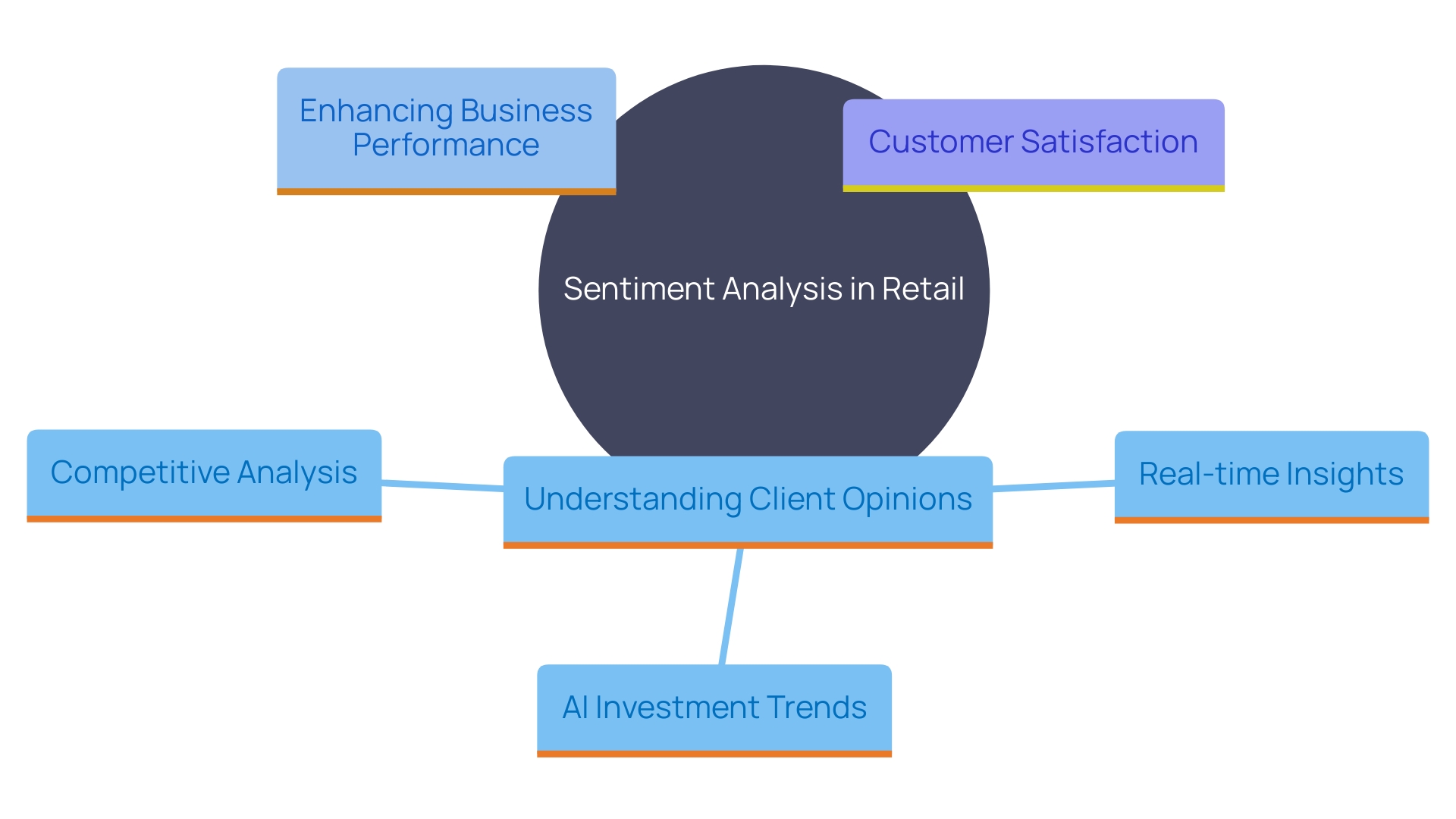
Fraud Detection
Fraudulent activities in e-commerce have become increasingly sophisticated, necessitating advanced solutions. Machine education (ML), a subset of artificial intelligence (AI), is proving to be a game-changer in this area. By analyzing vast amounts of transaction data, ML algorithms can identify unusual patterns indicative of fraud. These systems continuously learn and adapt from new data, enhancing their accuracy over time. This dynamic capability is crucial in an environment where fraud tactics evolve rapidly.
For instance, the Financial Services industry combats credit card fraud, which has seen a surge from 127 million cases in 2021 to an estimated 150 million in 2023 in the United States. Real-time online transaction pre-authorization processes, powered by ML, screen purchases at the point-of-sale, significantly reducing the chances of fraudulent transactions. Such robust fraud detection mechanisms not only safeguard retailers' operations but also build customer trust.
In today’s digital age, with 416,582 credit card fraud reports received by the FTC in 2023 alone, the implementation of ML in fraud detection is not just a technological upgrade but a necessity. The adoption of these advanced systems helps businesses stay ahead of fraudsters, ensuring a more secure financial ecosystem for all.
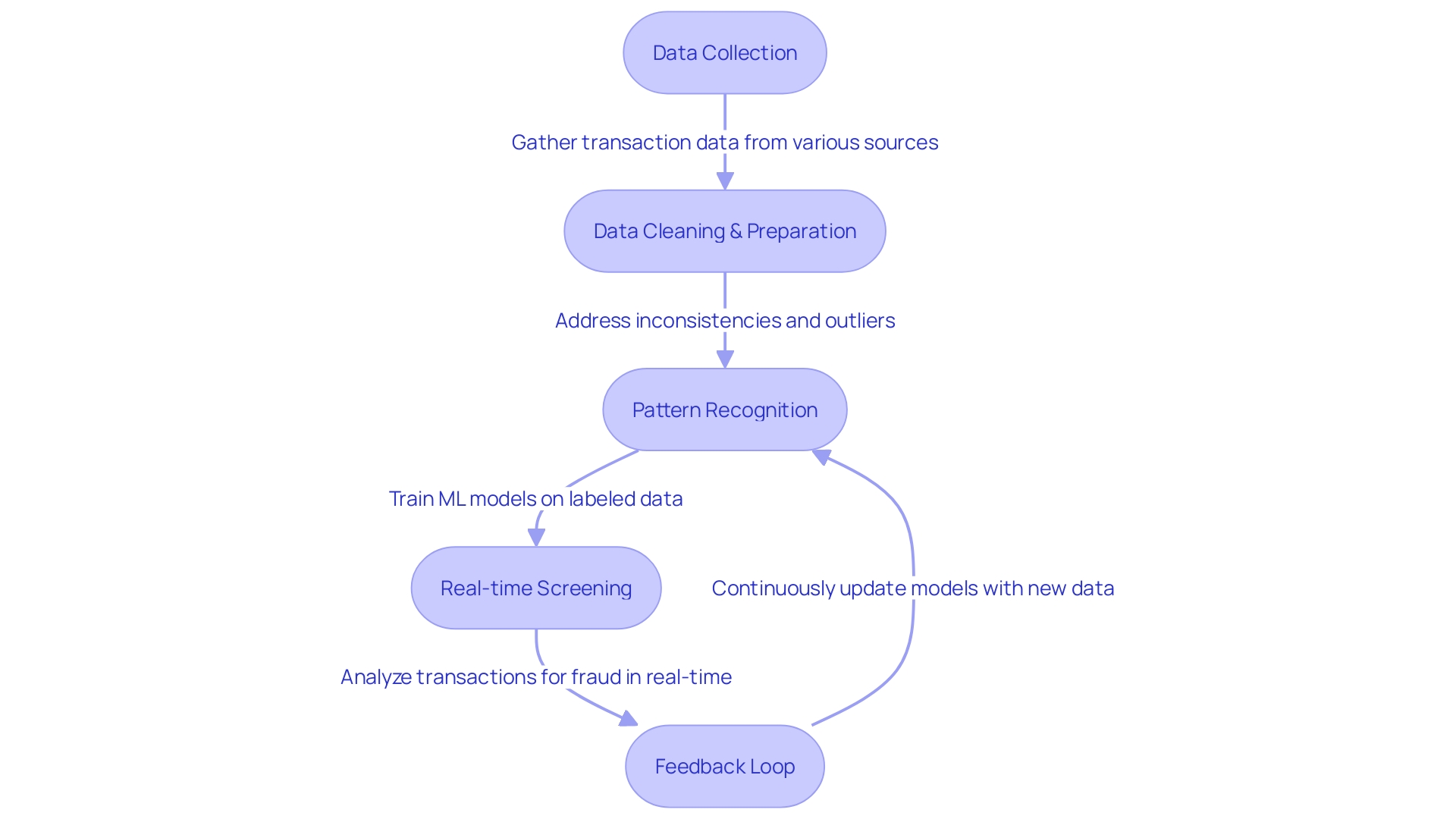
Supply Chain Optimization
Machine intelligence revolutionizes supply chain management by predicting potential disruptions and optimizing logistics operations. By leveraging vast amounts of data from diverse sources such as weather patterns, market trends, and historical sales data, retailers can make informed decisions that streamline operations and significantly reduce costs. For instance, Auchan Retail International implemented a learning-based demand forecasting algorithm that combined natural language processing (NLP) and domain expertise. This approach led to an impressive 18% reduction in out-of-stocks and shortages across their national operations within just one year.
Moreover, the logistics sector experiences significant advantages from automated analysis by improving demand forecasting precision. Traditional methods often fail to capture the dynamic nature of consumer behavior and market trends. Machine intelligence models, however, offer advanced predictive capabilities, enabling companies to optimize resource allocation and inventory management effectively. As Zebra Technologies' research indicates, a majority of global warehousing decision-makers are investing in automated systems and predictive analytics to address supply chain challenges and enhance resiliency and agility.
Utilizing artificial intelligence in logistics necessitates engaging cross-functional teams, such as data scientists, industry specialists, and business stakeholders, to guarantee models are in harmony with business goals. Continuous monitoring and iterative improvements of these models are essential to maintain their effectiveness over time. By embracing these optimal approaches, logistics firms can utilize artificial intelligence to promote expansion, improve productivity, and provide exceptional client experiences.
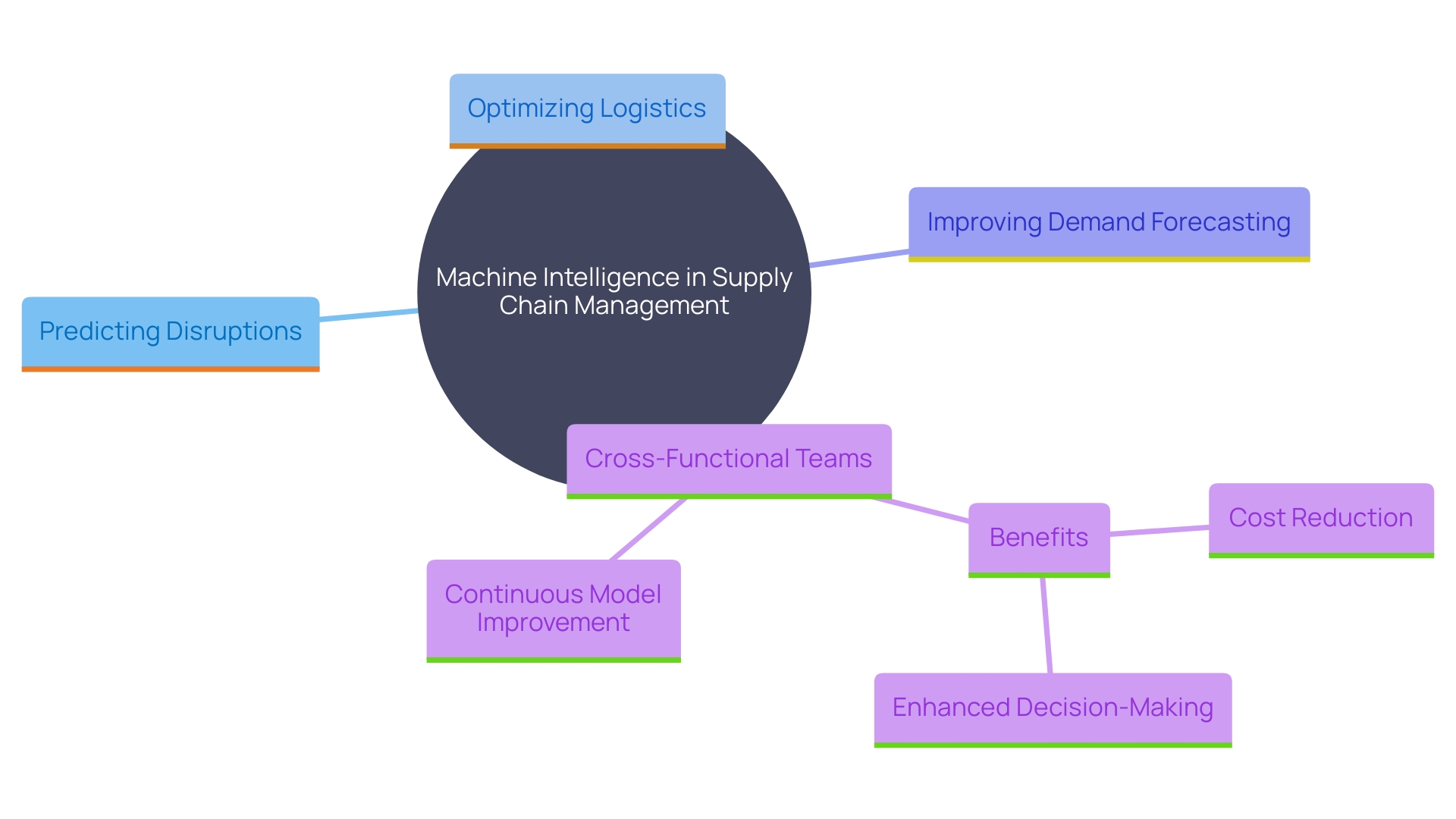
Enhanced In-Store Experience
In physical retail environments, machine learning is revolutionizing experiences through advanced technologies like facial recognition and personalized digital signage. These innovations not only create a more engaging shopping experience but also lead to enhanced loyalty among shoppers. For instance, retailers are using real-time video analytics to enhance security, improve service levels, and analyze traffic patterns. According to Corsight AI, facial recognition technology assists in safeguarding employees and patrons from violence and theft by identifying individuals with a criminal history. This technology, initially used by law enforcement, is now pivotal in retail to combat large-scale shoplifting. Furthermore, the analysis of buyer behavior provides accurate statistics based on age and gender, offering valuable insights to management. By leveraging these insights, retailers can optimize their operations and provide a seamless and enjoyable shopping experience, fostering loyalty and driving sales.
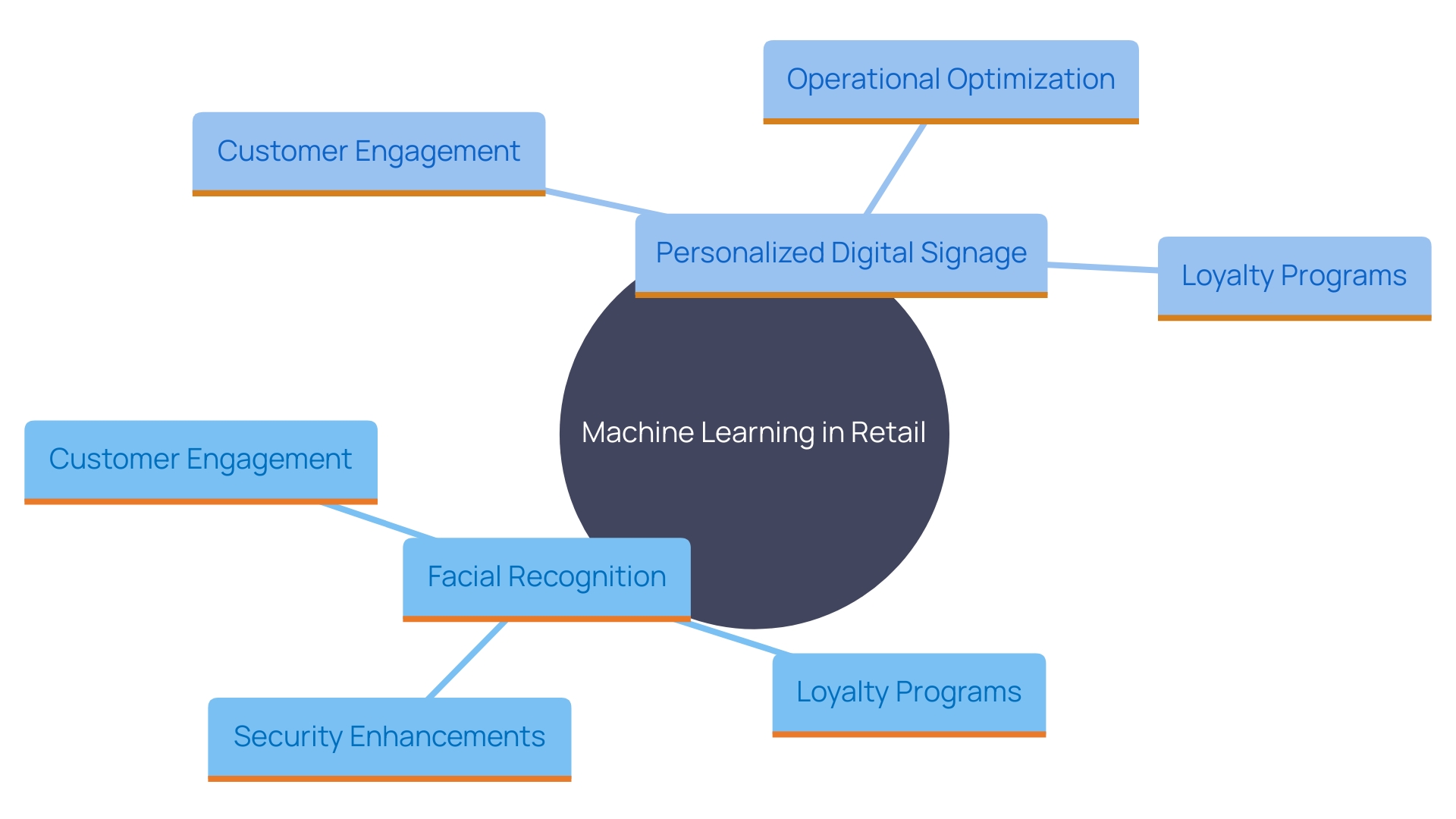
Visual Inspection
Machine learning applications in visual inspection are revolutionizing retail by ensuring unparalleled quality of items. Utilizing advanced image recognition technology, retailers can now detect even the most subtle flaws in items before they reach customers, significantly lowering return rates and improving brand reputation.
A prime example is Fujitsu’s quality control system, which has achieved over 99% defect detection accuracy by continuously monitoring and documenting the quality of its items. This system identifies and analyzes fault-relevant processes, enabling preventative measures against potential defects and anomalies. Consequently, retailers are not only protecting quality but also optimizing their manufacturing processes.
Moreover, companies like Flex have demonstrated that integrating AI and ML systems into production lines enhances efficiency, reduces costs, and creates new career opportunities. This transition to greater automation is a key component of Industry 4.0, promoting productivity and ensuring competitive advantage.
In practice, visual inspection systems utilize techniques such as edge detection, color analysis, and pattern recognition to verify product quality. More advanced models utilize deep algorithms to identify specific properties in images, ensuring precise and reliable inspection outcomes. For instance, a model trained to detect defects in manufactured profiles can consistently identify and classify issues, further bolstering quality control efforts.
By leveraging these technologies, retailers can transform their operations, ensuring high-quality standards and maintaining a strong reputation in a competitive market.
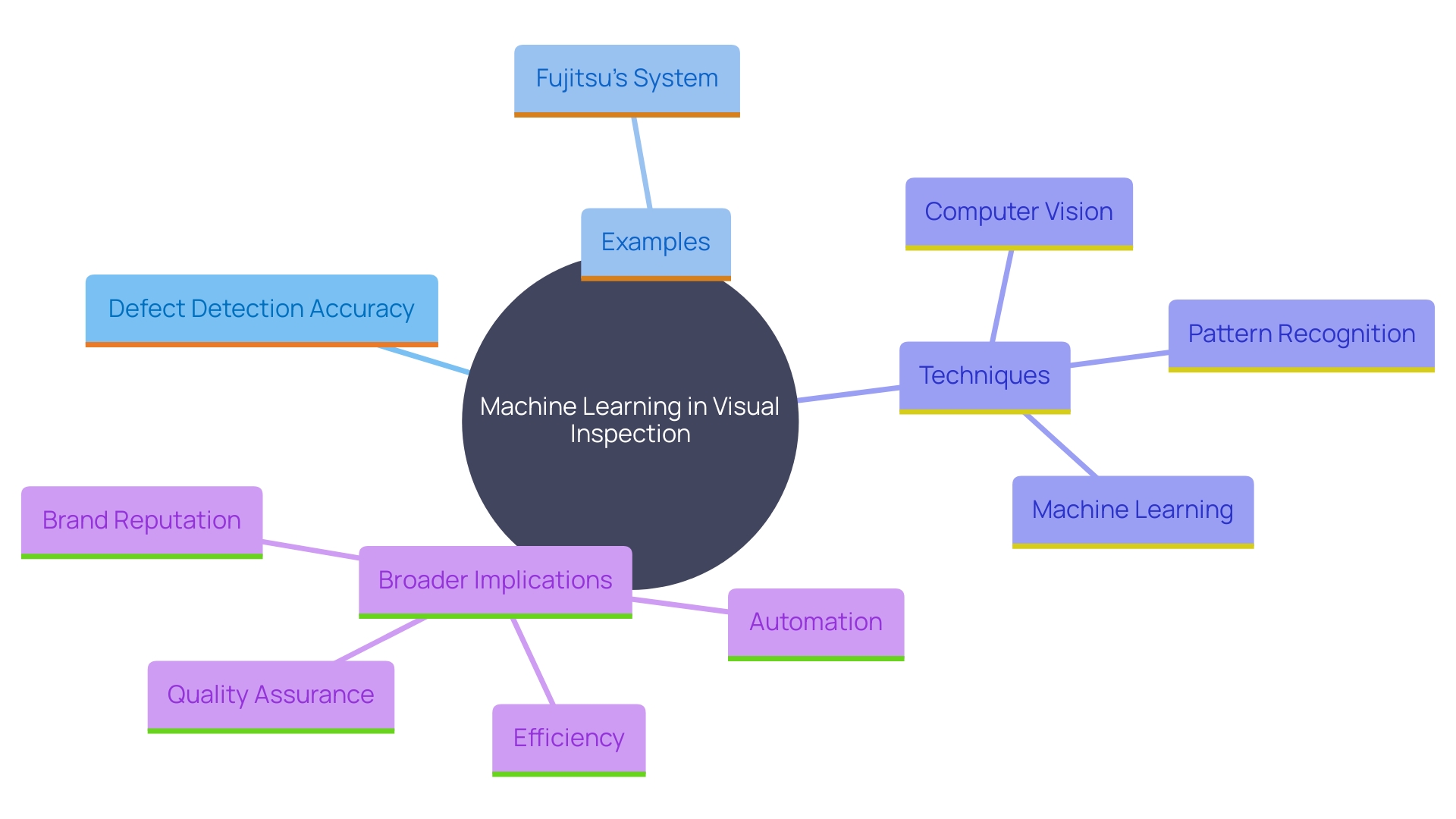
Sales Forecasting
Utilizing historical sales information and sophisticated computational techniques, retailers can now create highly precise sales predictions. This predictive capability is crucial in various aspects of business operations, such as inventory planning, marketing strategies, and overall decision-making. For instance, Carrefour improved their client experience by utilizing artificial intelligence to tailor product recommendations and interactions. Additionally, Auchan's implementation of a demand forecasting algorithm led to an 18% reduction in out-of-stocks and shortages across their national operations within a year. These advancements not only streamline inventory management but also optimize pricing strategies, reducing the need for aggressive markdowns and ensuring that retailers are well-prepared for future trends.
Research indicates that more than half of retail and consumer packaged goods executives plan to invest in AI tools for marketing and financial forecasting. This investment underscores the importance of AI in staying ahead in a competitive market. By embracing machine learning, retailers can align supply with fluctuating customer demand, ultimately enhancing efficiency and customer satisfaction.
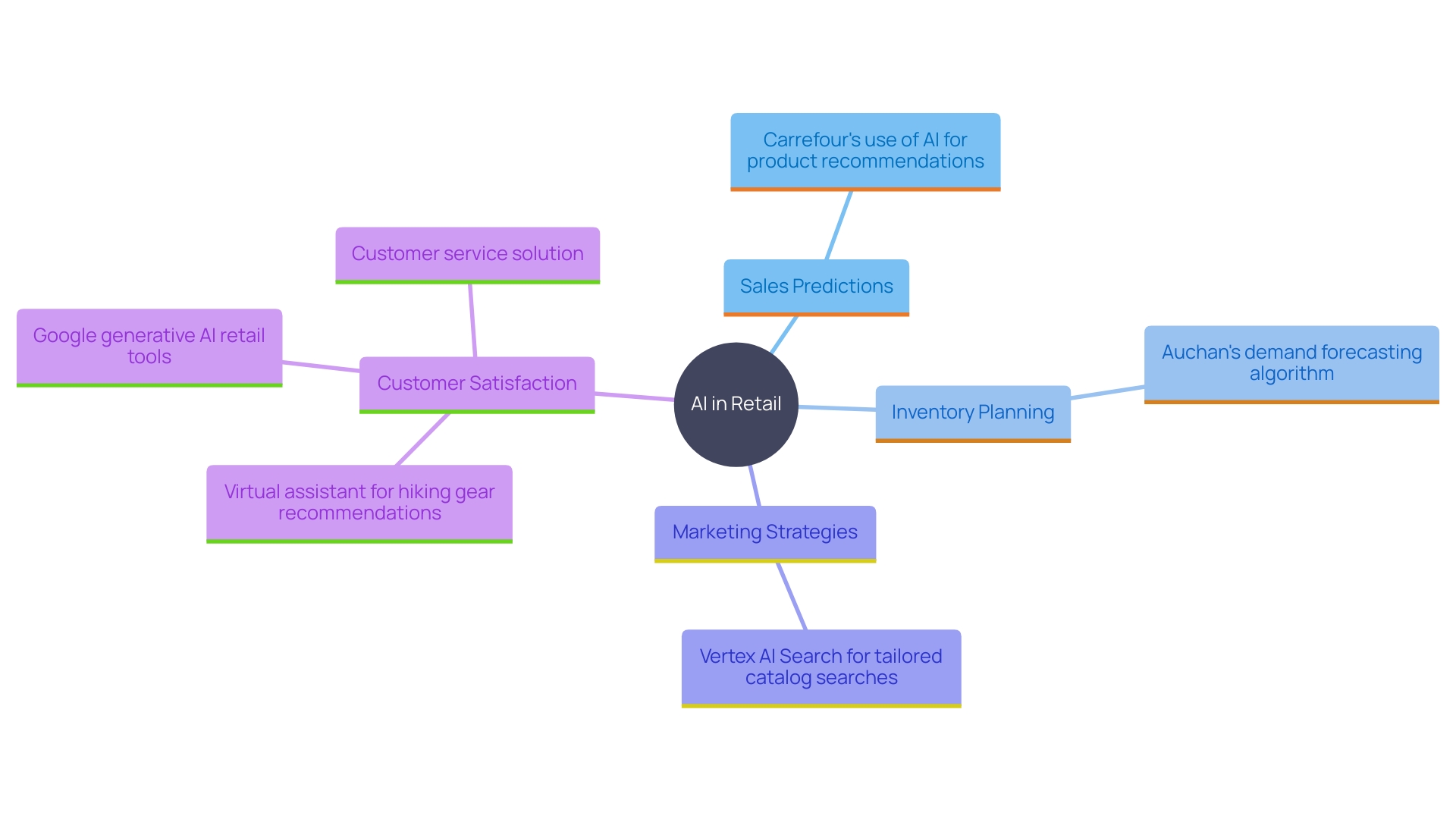
Conclusion
The integration of machine learning in e-commerce is not merely a trend; it represents a fundamental transformation that is reshaping the retail landscape. Key applications such as personalized recommendations, dynamic pricing, and advanced inventory management illustrate how retailers can harness data to enhance customer experiences and operational efficiency. Personalized recommendations drive sales by tailoring the shopping experience to individual preferences, while dynamic pricing allows businesses to remain competitive by adjusting prices in real-time based on various factors.
Customer support has also seen significant improvements through the use of chatbots and virtual assistants, which provide round-the-clock assistance and foster deeper engagement with consumers. Moreover, the capabilities of machine learning extend to fraud detection and supply chain optimization, where real-time data analysis helps mitigate risks and streamline logistics, respectively. The ability to predict customer sentiment through advanced analytics further empowers retailers to make informed decisions that enhance customer satisfaction and loyalty.
As e-commerce continues its exponential growth trajectory, projected to reach $7.4 trillion by 2025, the adoption of AI-driven solutions becomes increasingly essential. Retailers that leverage machine learning not only improve their operational efficiency but also position themselves for sustainable success in a highly competitive market. Embracing these technologies is crucial for staying relevant and meeting the evolving expectations of consumers.
The future of retail lies in intelligent, data-driven strategies that enhance both the customer experience and business performance, underscoring the necessity of integrating machine learning into every facet of e-commerce operations.





